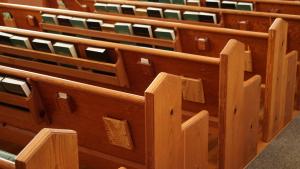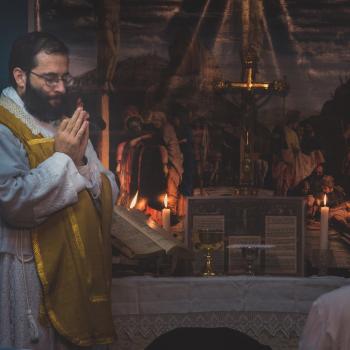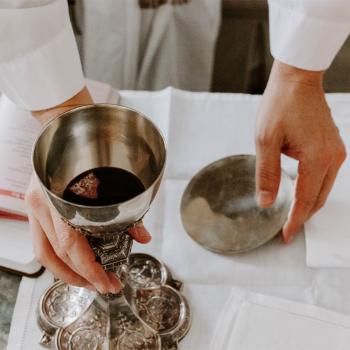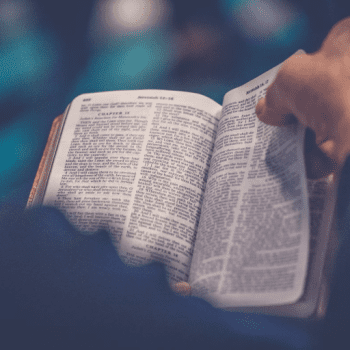Last week, the National Catholic Reporter came out with a story about a parish they see as a model parish. However, the story exaggerated the parish reach and it misunderstood the sacrament of orders.
St. William Catholic Church is a parish in Louisville run by a layperson. The archdiocesan website lists a lay “Pastoral Administrator,” and a retired priest as the “Sacramental Moderator.” The parish’s Facebook page lists a bunch of events with a focus on protests for immigrants and interfaith services. The NCR article indicated it became a sanctuary church in the 1980s and they help buy old houses, fix them up and rent them out at affordable prices.
In 1969 St. William was declining as an Irish ethnic parish, so the bishop put it under the direction of a young priest. With this new priest, “Out went the Gothic altar; in came a plain wooden table. Out went the pews; in came chairs that could be rearranged as wanted. Out went Gregorian chant; in came guitar Masses.” In 1990, a layperson became the administrator.
NCR Misrepresents Parish Numbers
After the 1969 reforms, NCR states, “Within a few years, St. William became one of the most popular churches in the city, drawing people from around the archdiocese and even from Indiana, across the Ohio River.” Later, it repeats, “St. William is one of the most successful parishes in Louisville.”
This seems incorrect. The numbers tell a very different story. A 2002 article mentioned that St. William had 442 members. I could not find the average parish size for 2002 but in 2000, it was 855 households, and in 2010 it was 1,167 households. If we assume a constant growth rate from 2000 to 2010 and assume that an average US parish household is the same as the US census average, we get the average parish with 2,367 members in 2002. St. William is about 18.7% the size of this rough calculation of an AVERAGE parish. That’s far from, “One of the most popular churches in the city.”
The parish obviously has a certain direction as can be seen above. NCR seems to think that we should have many more parishes like this. They state, “Perhaps it is time for us to be more than a local success story. […] We are a living example of how the Catholic Church can move forward despite the priest shortage, despite the sex scandals and despite the Roman Curia.”
Having small parishes like this parish seem to exacerbate, not resolve, a priest shortage. Even if the priest doesn’t have to manage the parish, he is spread out and likely stressed. If parishes were shrunk to a little under one fifth their size, priests would be five times as spread out in covering parishes. I can only imagine the parishes fighting over who gets 11am Sunday Mass. I’ve seen the struggle for Mass times when a priest is split between two or three locations – I can only imagine the fight when an average diocesan priest has 4 to 6 locations. There is no way a priest can say Mass on Sunday at 5 locations.
If a destination parish in a diocese of over 200,000 can only attract 442, this doesn’t seem like a stable model to be repeated throughout the diocese.
Munus Regendi as Proper to Priests
Canon law stipulates that a parish should be run by a priest. 515.1 states, “A parish is a certain community of Christ’s faithful stably established within a particular Church, whose pastoral care… is entrusted to a parish priest as its proper pastor.” And 521.1 clarifies, “To be validly appointed a parish priest, one must be in the sacred order of priesthood.”
This is not merely practical. The munus regendi (aka: the power/duty of governing) is one of three powers/duties imparted at ordination. Benedict XVI spoke eloquently about this back in 2010:
The Church is called and commits herself to exercise this kind of authority which is service and exercises it not in her own name, but in the name of Jesus Christ, who received from his Father all authority both in Heaven and on Earth (cf. Mt 28: 18). Christ tends his flock through the Pastors of the Church, in fact: it is he who guides, protects and corrects them, because he loves them deeply. But the Lord Jesus, the supreme Shepherd of our souls, has willed that [bishops and priests] participate in his mission of taking care of God’s People, of educating them in the faith and of guiding, inspiring and sustaining the Christian community. […]
The concept of “hierarchy” carries, in public opinion, an element of subordination and of judgement; therefore to many the concept of hierarchy appears to be in contrast with the flexibility and vitality of the pastoral meaning and also appears contrary to the humility of the Gospel. However, this is a misunderstanding of the meaning of hierarchy, which arose in historical times from abuses of authority and careerism. But these are, in fact, abuses, and have nothing to do with the essential meaning of “hierarchy” itself. […]
The word hierarchy is generally said to mean “sacred dominion,” yet the real meaning is not this, but rather “sacred origin”; that is to say: this authority does not come from man himself, but it has its origins in the sacred, in the Sacrament; so it subjects the person in second place to the vocation, to the mystery of Christ; it makes of the individual a servant of Christ, and only as a servant of Christ can he govern and guide for Christ and with Christ. Therefore, he who enters into the Sacred Order of the Sacrament, the “hierarchy,” is not an autocrat but he enters into a new bond of obedience to Christ.
Priests are called to lead parishes but not rule like pagans. A priest instead is to act with the laity and guide them all towards Jesus in the way Jesus wants. Lay people often have insights that help us priests govern well. I once used “disordered” when I meant “disorganized”: I was grateful when a layperson reminded me of how the former could easily be misinterpreted. During the construction of my parents’ parish, some with orders originally suggested an amphitheater-style but laypeople asked for a more traditional style and they currently have a beautiful cruciform church.
When Pope Francis tells priests, “Be shepherds with the smell of sheep,” it is referring to this dynamic as well. A priest should understand his people and make decisions for their good, not some abstract good.
If I were ever a pastor, I can imagine situations that would result in different decisions based on lay input or parish situations. If an existing parish festival had been completely secularized, I’d probably move to focus it more on the spiritual but it likely wouldn’t be as spiritual as if I initiated a parish festival. I’d suggest Our Lady of Lourdes as an outdoor statue, but if the laypeople preferred Our Lady of Grace, we’d be getting an Our Lady of Grace statue. Those are just two examples of many that came to mind.
Let’s all work so we have parishes lead by parish priests who listen to their parish and guide them as Jesus would.
Note: I make almost nothing from these writings so I really appreciate when people support me on Patreon. Donations like that help me to continue to produce great content like this.













